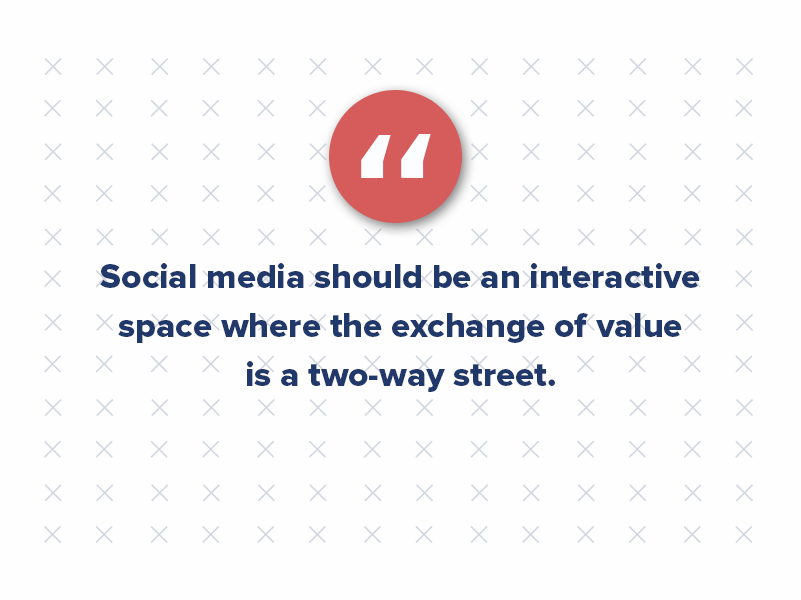Is Social Media Marketing Worth It? Let’s Break Down the Numbers
Social media marketing: Everyone’s doing it, and the promise of a massive, engaged audience for “free” is hard to resist.
But hold on a second.
Before you jump into the endless vortex of posting and follower chasing, consider this: recent studies show that organic social media delivers the lowest return on investment compared to other marketing channels.
Ouch. That can sting.
However, before you write off social media entirely, here’s the good news: social media marketing can be a powerful tool for driving engagement and brand awareness (which ultimately leads to authority, thought leadership, website traffic, and even conversions). The key is understanding its strengths and weaknesses and how to leverage it strategically.
The allure of social media for business is undeniable. Endless scrolling, instant gratification, and the promise of reaching millions — it’s a tempting cocktail. But is more always better?
For years, the mantra was “post more, engage more.” But the reality is, the social media landscape has evolved. Audiences are savvier, attention spans are shorter, and algorithms are smarter. Now, it’s about strategic, high-quality content that truly resonates.
Why Tracking Social Media Success Can Feel Like Counting Raindrops
Let’s be honest, proving the value of social media marketing to upper management can feel like trying to quantify the weight of a cloud.
While platforms promise massive reach, 52% of organizations struggle to measure their impact. Unlike traditional advertising with clear metrics, social media’s influence often feels intangible. A witty tweet might go viral, generating tons of engagement, but did it translate into dollars and cents?

The tricky part is that social media marketing often lays the groundwork for later conversions in the marketing funnel. Someone might see your informative blog post about a common industry problem, “like” your page, and then months later, when they’re ready to tackle that problem, remember your company and visit your website for a solution.
It’s a subtle influence, not a direct conversion machine.
Why You Still Need Social Media Marketing (Even If It’s Hard to Track)
Despite the tracking challenges, social media marketing offers several invaluable benefits that contribute to your overall marketing strategy, even if they aren’t directly reflected in a sales report:
- Brand Awareness & Visibility: Social media platforms put your brand directly in front of a massive audience, keeping you top-of-mind and fostering brand recognition. It’s like having a constant, low-key billboard reminding people you exist.
- Building Relationships: Social media allows for two-way communication, the holy grail of marketing! Respond to comments, answer questions, and engage with your audience in real time. This builds trust and loyalty, turning fleeting followers into brand advocates.
- Market Research & Customer Insights: Social listening allows you to eavesdrop on the online world, seeing what people are saying about your brand, industry trends, and competitor activity. This invaluable intelligence can inform your marketing strategy and help you stay ahead of the curve.
- Community Building: Create a vibrant online community where customers can connect, share experiences, and feel a sense of belonging. This fosters brand loyalty and positive word-of-mouth marketing — essentially, free advertising from your happy customers!
Beyond the Likes
Despite the challenges in quantifying social media ROI, it still remains a critical component of any successful marketing strategy. Why?
Consider this: a staggering 94.6% of internet users between 16 and 64 years old visited a social network site in the last month. This massive audience represents a goldmine of potential customers.
While social media might not always yield direct sales figures, it’s where discovery happens. A full 44% of Gen Zers and 33% of millennials primarily gather product information through social channels. This means social media is often the first touchpoint for many consumers, influencing their purchasing decisions.

Additionally, 90% of marketers now recognize the importance of social search optimization, underscoring the platform’s role in the overall customer journey.
Prioritizing Quality Over Quantity
The era of shotgun social media marketing is over. Companies are realizing that spreading resources thin across multiple platforms isn’t always the most effective strategy. There’s a growing shift towards focusing on a few key channels where they can truly excel.
Platforms like Twitter have seen a decline in brand usage as companies prioritize social media ROI. The future lies in mastering a select group of platforms, delivering exceptional content, and measuring impact closely.
So how do we bridge the social media ROI gap?
- Set SMART Goals: Don’t just aim for “more followers.” Define Specific, Measurable, Achievable, Relevant, and Time-bound goals that align with your overall marketing objectives. Focus on metrics like website traffic, lead generation, or brand sentiment. These will be your guiding lights to measure success.
- Targeted Content: Don’t be a social media spammer. Create high-quality, engaging content that resonates with your ideal customer. Tailor your content to the specific platform, understand what your audience wants, and provide them with valuable information or entertainment. Social is best for building brand equity, which takes time. Don’t revert to your old, self-promotion-y ways either. No one likes a hard sell, and letting them flock to you will be so much more effective in the long run.
- Paid Advertising: Consider strategically using paid social media advertising to reach a wider audience and target specific demographics with a laser focus. Paid ads can be a powerful tool to promote valuable content offers, webinars, or drive traffic to key landing pages.
- Track & Analyze: Metrics like website traffic, lead generation, and social media engagement paint a picture of your social media’s impact, even if you can’t directly attribute every sale to a specific tweet. Use analytics tools to understand what’s working and what’s not, and constantly refine your approach. Run experiments with new content types or tone of voice. Once you see results, start tweaking future posts and keep testing and iterating as you go.
- Be Consistent: Regular posting keeps your brand on mind and builds your content’s anticipation.
To truly capture attention, brands must shift their focus from quantity to quality. Social media should be an interactive space where value exchange is a two-way street. crafting content that informs, inspires, or simply brings a smile to faces, businesses can foster genuine connections with their audience. It’s not just about promoting products or services; it’s about offering value and becoming part of the conversation. Remember, social media is a two-way street. By listening to your audience and responding authentically, you can build trust and loyalty that translates into long-term business success.

Making Social Media ROI Work for You
Social media success requires a strategic approach, not random posting. It’s like having a secret weapon in your marketing arsenal — one that fosters brand loyalty, fuels word-of-mouth marketing, and positions you as a thought leader in your industry.
Ready to unlock social media marketing’s true potential? Contact us today for a free consultation and learn how we can help you develop a winning social media strategy that aligns with your business goals.




